Corporate Tax Rate: A Q&A with Rep. Carol Miller

The NAM recently talked to Rep. Carol Miller (R-WV), the head of the House Ways and Means Committee’s Supply Chain Tax Team, about how raising the corporate tax rate would “devastate” manufacturers, and what she and her colleagues in Congress are doing to keep it where it is.
NAM: Rep. Miller, Congress is facing a “Tax Armageddon” next year, as crucial provisions from 2017’s Tax Cuts and Jobs Act are set to expire. As the leader of the Ways and Means Supply Chain Tax Team, what is your focus moving into next year’s debate?
Miller: In all the meetings I have with Fortune 500 companies, small businesses and stakeholders, it’s clear that the corporate rate is top of mind for everyone. We are all concerned that if the corporate rate is raised from 21%, consumers will be hit the hardest by the rising prices of everyday goods and services. I know for capital-intensive industries like mining, having a consistent tax rate is essential. I’m also focused on how energy tax credits are implemented and making sure that the government isn’t picking winners and losers by their rulemaking. During the reauthorization, my Supply Chains Tax Team will be evaluating the various energy credits currently in law to see what works and what needs tweaking.
NAM: Prior to 2017, the United States’ corporate tax rate was 35%, the highest in the OECD and third-highest in the world. Tax reform lowered the rate to 21%, aligning the U.S. with the average rate elsewhere in the OECD. What does it mean for Congress to protect this lower rate, and what would happen if it goes up?
Rep. Miller: If the corporate rate goes up, it would be devastating for every American, from the small business owner to the CEO who is trying to expand their business. The corporate rate rising means there will be higher prices while the U.S. struggles to compete on the global scale. The best thing we can do in Congress is cement the corporate rate at 21%—or better yet, lower it even more—through the TCJA reauthorization in 2025.
NAM: In 2018, the year the 21% corporate rate took effect, manufacturers created more than 260,000 jobs (the best year for job creation in 21 years) and increased wages by 3% (the best year for wage growth in 15 years). What else is the Supply Chain Tax Team seeing on the impact of the corporate tax rate as they visit with businesses around the country?
Rep. Miller: We’ve only seen positive impact from the corporate rate being lowered. When the pandemic hit and the markets were falling due to uncertainty and instability, the lower corporate rate gave companies more flexibility to help their employees and keep costs low instead of paying the government sky-high taxes. The lower corporate rate protected jobs, helped produce more economic growth and makes all the difference for American families who are struggling with inflation. Furthermore, the lower rate led to higher federal revenues since companies were able to expand and invest so heavily following the passage of the Trump Tax Cuts.
NAM: Thank you for being a champion for manufacturers across the country. What can our members do to stay involved and be a resource for your tax team’s work?
Rep. Miller: Spread the word to those who might not know why the corporate rate is so important. The majority of Republicans are on the same page about this, but some think that in order to bring down inflation, you need to raise taxes on businesses. That is not true. Prices only go down if costs for companies go down, and the corporate rate is an effective way to do that while simultaneously boosting the American economy.
Sylvamo Supports Healthy Forest Ecosystems
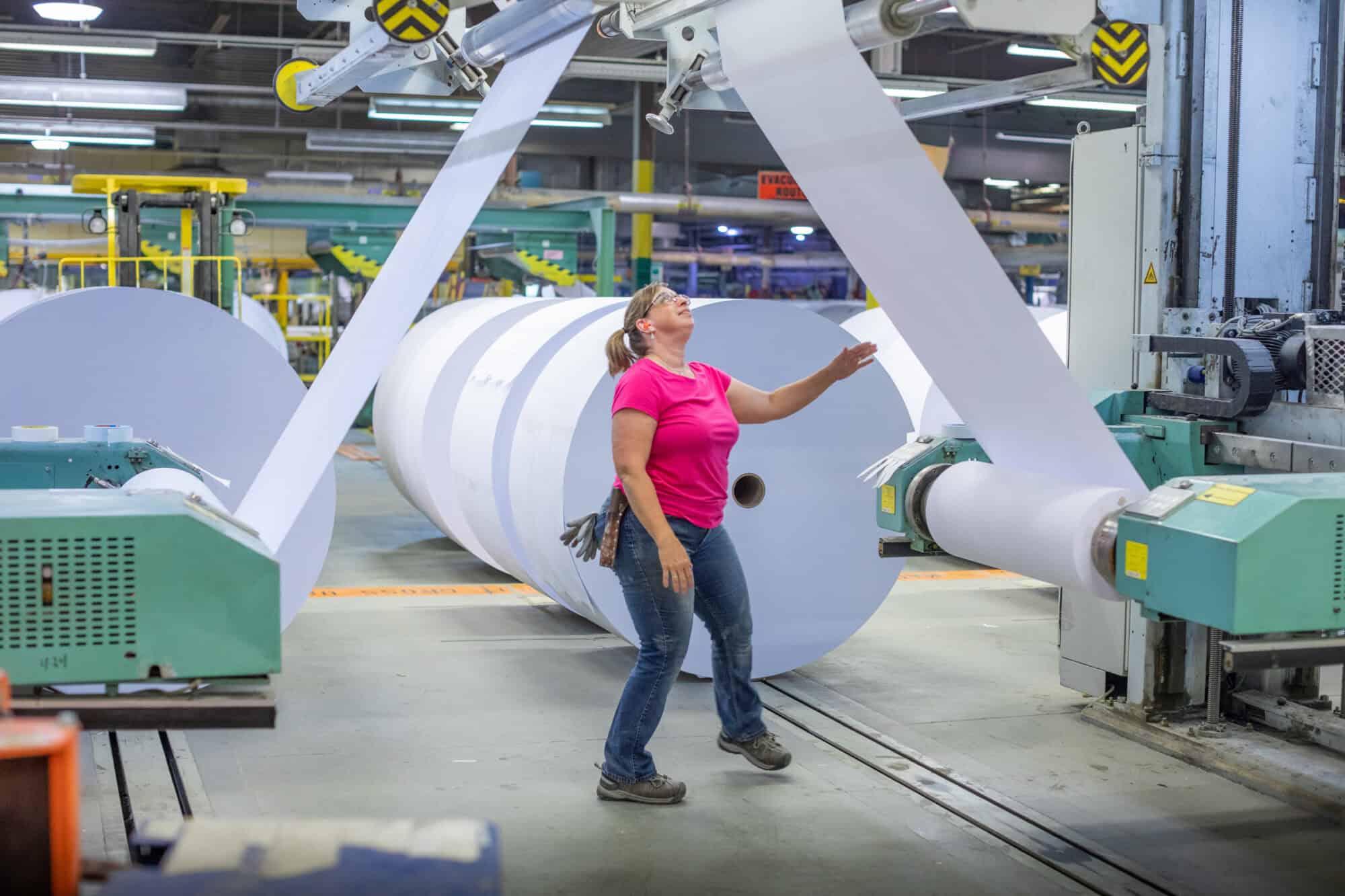
With a name that means “love of forests,” Sylvamo has a built-in dedication to sustainability. And the Memphis, Tennessee–based paper company, which spun off from International Paper in 2021, lives up to its moniker.
A holistic approach: “We use the whole tree in the manufacturing of our products,” Sylvamo Chief Sustainability Officer James McDonald told the NAM. “We use the fiber from the wood to make our paper, and all the residuals—think of the sticky stuff in trees—we capture and use to generate energy.”
- This process supplies the company with approximately 85% of its global energy needs, according to McDonald.
Planting the world: Sylvamo, which produces well-known brands like Hammermill, Accent Opaque, Springhill and HP Papers, is committed to restoring and protecting forests worldwide.
- “Our entire business depends on the sustainability of forests,” McDonald said. “It turns out your third-grade science teacher was right—photosynthesis does work. The more trees we grow, the more we can clean the air and protect the environment.”
Big ambitions: Sylvamo has conserved, enhanced or restored more than 37,000 acres of forestland to date. It has set the lofty goal of reaching 250,000 acres of forestland by 2030.
- To that end, the company is supporting the Nature Conservancy’s work to create a healthy, resilient and connected Appalachian landscape in the U.S. and the World Wildlife Fund’s work to restore Brazil’s Atlantic Forest, while also working with individual landowners to enhance forest management practices in France.
Diverse sources: Sylvamo primarily sources local fiber to manufacture its products in Europe, Latin America and North America, a strategy that enables a smaller environmental footprint, McDonald said.
- “Most of the fiber is sourced very close to [each] mill, which supports our low-cost assets in each region and this global footprint advantage in those markets,” he added.
GHG goal: The company is committed to a greenhouse gas reduction goal of 35% from a 2019 baseline across all three emissions scopes, an ambitious goal that demonstrates a commitment to improve Sylvamo’s climate impact continuously, according to McDonald.
- A quick refresher: Scope 1 refers to direct emissions, Scope 2 to indirect emissions associated with the purchase of power and Scope 3 to indirect emissions produced by a company’s value chain.
- Above all, “we try to be efficient with the energy we do use so that we can use less to produce our products,” McDonald told us.
A vital commodity: Paper and paper products continue to “play a crucial role every day in people’s lives,” said McDonald—and they are some of the world’s most recyclable materials.
- Some 68% of paper in the U.S. was recovered in 2022. In some parts of Brazil, the percentage is about 60%, and in Europe, it’s near 80%, he added.
The last word: “Just think about it: We use paper for education, communication, entertainment and more,” McDonald pointed out. “Our product plays a huge role in society and has a good lifecycle story.”
Rep. Miller: Keep Corporate Tax Rate Low

Unlike many other pro-growth tax reform provisions, the corporate tax rate isn’t set to expire at the end of 2025, but some policymakers and President Biden have proposed increasing it.
The NAM recently talked to Rep. Carol Miller (R-WV), the head of the House Ways and Means Committee’s Supply Chain Tax Team, about how raising the corporate tax rate would “devastate” manufacturers, and what she and her colleagues in Congress are doing to keep it where it is.
“Devastating for every American”: Raising the corporate tax rate from its current, competitive 21% rate would be ruinous, Rep. Miller said. She’s focused on preventing that from happening.
- “If the corporate rate goes up, it would be devastating for every American, from the small business owner to the CEO who is trying to expand their business,” Rep. Miller told us. “The corporate rate rising means there will be higher prices while the U.S. struggles to compete on the global scale. The best thing we can do in Congress is cement the corporate rate at 21%—or better yet, lower it even more—through the [2017 Tax Cuts and Jobs Act] reauthorization in 2025.”
- Prior to tax reform, the U.S. had the highest corporate tax rate in the Organisation for Economic Co-operation and Development at 35%, and the third-highest rate in the entire world, harming America’s ability to attract manufacturing investment.
The effect of 21%: Rep. Miller emphasized that the U.S. economy has “seen only positive impact from the corporate rate being lowered.”
- “When the pandemic hit and the markets were falling due to uncertainty and instability, the lower corporate rate gave companies more flexibility to help their employees and keep costs low instead of paying the government sky-high taxes,” she went on. “The lower corporate rate protected jobs, helped produce more economic growth and makes all the difference for American families who are struggling with inflation.”
- In 2018, the year the 21% rate took effect, manufacturers created more than 260,000 jobs and were able to raise wages by 3%, the fastest pace in 15 years.
What manufacturers can do: To help preserve the 21% corporate tax rate, manufacturers should be vocal about its importance to the U.S. economy.
- “Spread the word to those who might not know why the corporate rate is so important,” Rep. Miller concluded. “Some think that in order to bring down inflation, you need to raise taxes on businesses. That is not true. Prices only go down if costs for companies go down, and the corporate rate is an effective way to do that while simultaneously boosting the American economy.”
Get involved: The NAM’s “Manufacturing Wins” tax campaign gives manufacturers the opportunity to share their tax reform stories with policymakers. You can join the campaign at www.NAM.org/MfgWins.
Learn more: Our full interview with Rep. Miller is available here.
How Henkel Is Exceeding Sustainability Goals
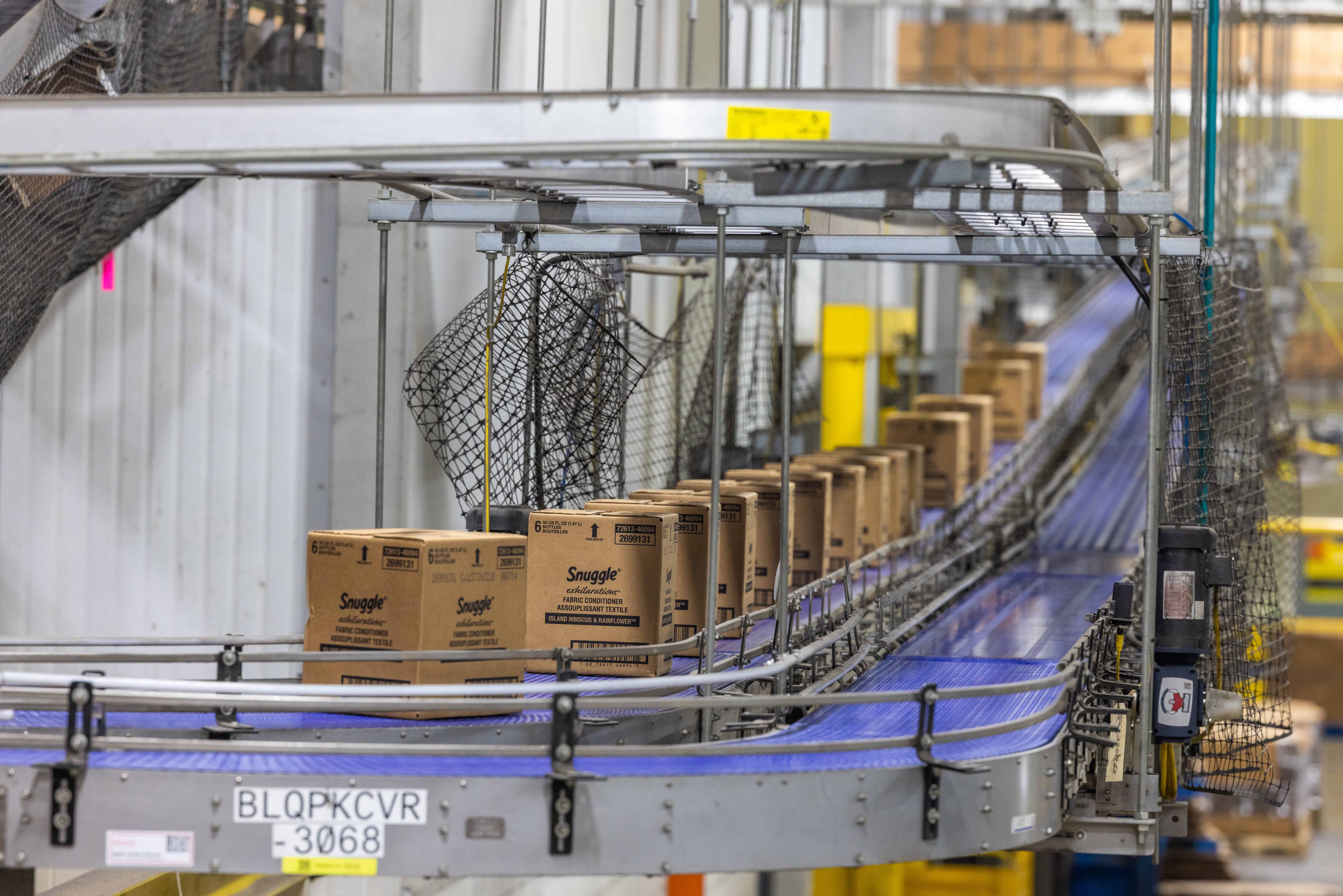
If you ask Henkel how it managed to cut its worldwide carbon footprint in half a few years ago, its leaders will gladly let you in on the secret: there isn’t one.
The impressive reduction is down to common sense and good old-fashioned effort.
Putting in the work: “One focus is on our own sites and production, and we’re continuously working on this,” said Henkel North America President Pernille Lind Olsen.
- By the end of 2023, the global adhesives and consumer brands manufacturer had fully converted 19 of its worldwide facilities to run on renewable electricity sources, a feat it achieved through on-site energy production including wind and solar, as well as direct purchase of green power from local utility companies.
- Henkel also entered into virtual power purchase agreements, financial transactions through which it buys renewable energy credits that serve to decarbonize geographically diffuse operations.
- In addition, the company hired energy-efficiency consultants to come into its most energy-intensive plants and tell it where and how to cut down on resource use and waste.
Exceeding goals: Thanks to these efforts, Henkel has reduced its carbon footprint by 61%, heading toward its 2025 goal to slash its carbon footprint (from a 2010 baseline) by 65%.
Sustainable personal care: Henkel is always on the lookout for ways to increase the sustainability of its 30-plus beauty and personal care brands, which include Purex and All laundry detergents and Schwarzkopf hair cosmetics.
- For example, the company keeps a formulation database of its more than 200,000 products. In the database, each formula is assigned a compact sustainability report, making it possible for the company to compare profiles “to optimize the impact of our footprint,” Olsen told us.
- Last March, Henkel reformulated and repackaged its Dial body washes in order to use bottles made from 100% recycled plastic.
- Henkel has also reduced the amount of virgin plastic in the bottles of Persil laundry detergent, replacing it with recycled content.
Less to landfills: Henkel isn’t done setting goals. It’s now aiming to send exactly zero waste to landfills by 2030.
- And it’s making progress: through partnerships with local waste management companies, in 2023 Henkel converted three of its U.S. sites to redirection rather than disposal of production waste from their operations—that is, they have established processes to keep materials out of landfills. Some of the ways they do this are to recycle or reuse items rather than throw them away.
- Meanwhile, some 82% of Henkel’s global facilities had already been doing the same.
A symbiotic relationship: Pursuing sustainable methods is both a business and moral imperative for the company, which will celebrate 148 years of business in September.
- “As climate change becomes a bigger challenge for everyone to tackle, it becomes increasingly necessary to prioritize sustainability as part of your business,” Olsen said.
- “And sustainability is good business for us and our customers. There’s a price benefit there. For example, when you lower the temperatures or reduce process steps at our industrial process customers, energy and material usage will be lower, maintenance of the equipment becomes less frequent and you can run longer without stopping, which saves money.”
Stronger together: “To make sure the planet’s resources can sustain us and our kids for generations, we will need to tackle the sustainability challenge of how to use less energy, fewer materials, less water,” Olsen concluded.
- “That’s a big challenge, and I’m a firm believer that it needs to be tackled collaboratively. I believe the business leaders of today play a decisive role in how we will do that.”
This story has been edited.
Timmons: Industry Resilient, but Action Needed
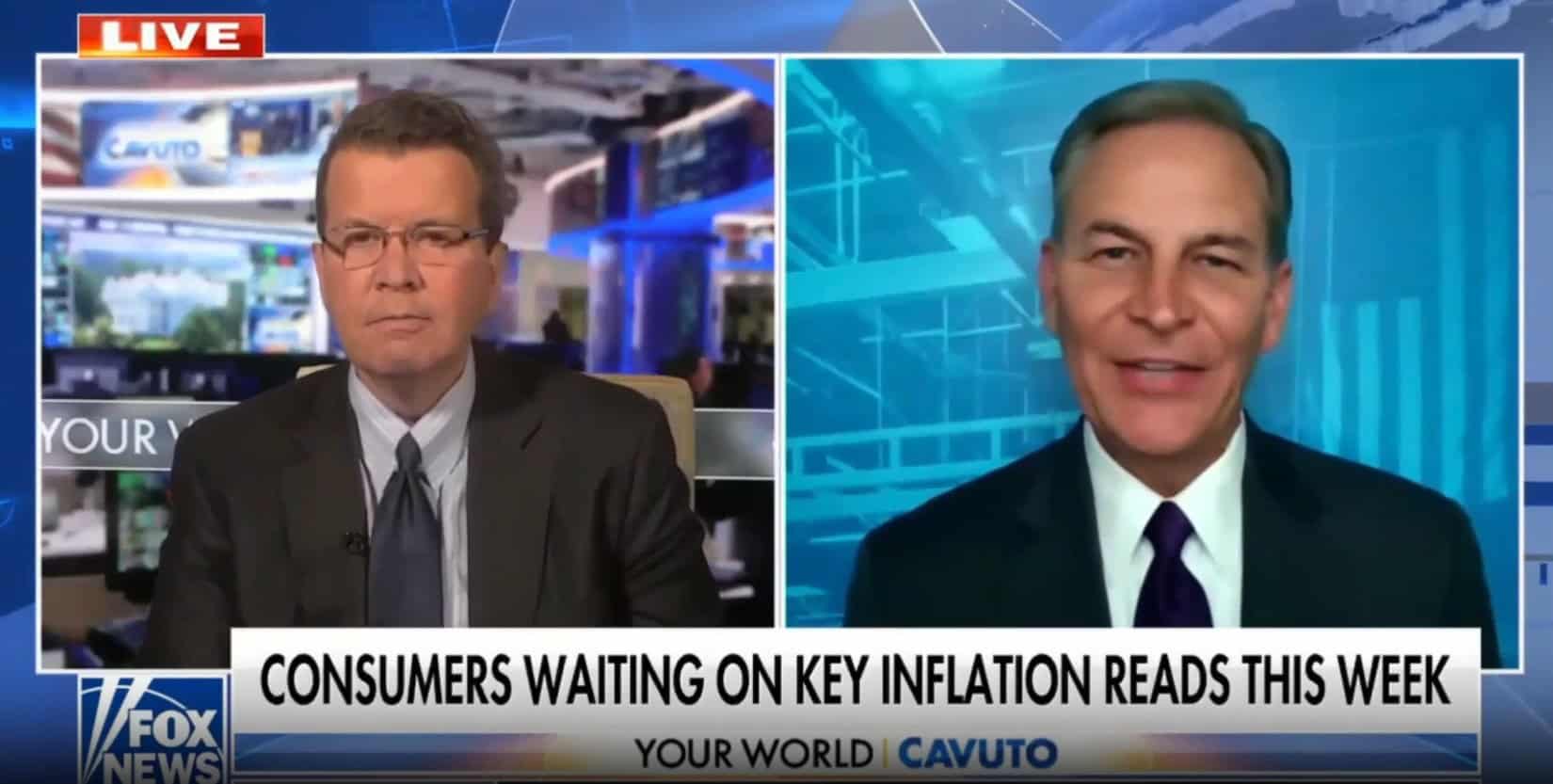
Despite mixed market signals in recent weeks, the U.S. economy is strong and manufacturing is resilient—but Congress must take certain steps to maintain the industry’s competitiveness, NAM President and CEO Jay Timmons told Fox News host Neil Cavuto Monday.
What’s going on: When lawmakers return from their August recess next month, they should prioritize several tax provisions, Timmons said.
- “When … Congress goes back, we’ve got to deal with interest deductibility, and we’ve got to deal with the research-and-development tax deduction,” he continued. “We’ve got to deal with full expensing. Those are things that have expired.” These measures and others are top priorities in the NAM’s tax campaign, Manufacturing Wins.
- Other manufacturing-critical tax provisions are scheduled to expire or be reduced drastically at the end of next year, including the pass-through and estate-tax deductions. What’s more, “candidates on both sides of the aisle … are talking about raising taxes on businesses,” Timmons said. Individual tax rates and tax rates on manufacturers that operate globally are also set to rise at the end of 2025.
Regulatory onslaught: Manufacturers are also struggling with a “regulatory burden that is driving up the cost of doing business,” Timmons told Fox News.
- “We have restrictions on our ability to develop energy sources here, and we have a ban on exports of natural gas. All of those things lead to potential downsides in the economy.”
- The vast majority of Americans support exporting natural gas, a March NAM poll found, but the Biden administration’s indefinite pause on permits to export liquefied natural gas, imposed in January, continues.
Hopeful outlook: “There is a … very positive sense among manufacturers that if we do the right things on the policy front, we’re going to continue [the] expansion in the sector,” Timmons added. “We’re going to continue the record investments that we’ve seen, the record job growth and the record wage growth in the sector.”
NAM: Don’t Rush Proposed Reforms in Mexico

Mexican President Andrés Manuel López Obrador proposed a sweeping package of amendments to Mexico’s constitution back in February. Now, with President-elect Claudia Sheinbaum set to take office in less than two months, manufacturers want to know whether and how the changes will happen.
What’s going on: “Over the last 10 years, manufacturers in the U.S. have dramatically expanded facilities and operations in Mexico, totaling over $25 billion, according to the U.S. Commerce Department,” said NAM Director of International Policy Dylan Clement at the recent Wilson Center event “Mexico’s Judicial Reforms: Perspectives from the Private Sector.”
- “When manufacturers invest, they sink large amounts of capital—literally—into the ground, which is costly to relocate once built,” he continued. “We do not pretend to know how the judicial reform will play out … [but] manufacturers are fearful of the risk associated with enacting sweeping changes to the judicial system in Mexico on such a short timeline.”
- Sheinbaum, who will be Mexico’s first female president, and her Morena party won a landslide election in June.
What’s been proposed: The constitutional amendments set forth include eliminating government oversight and regulatory agencies, including Mexico’s freedom-of-information body, INAI, and its anti-trust agency, COFECE, and requiring all Mexican judges—including Supreme Court judges—to be elected by popular vote, according to the Associated Press and Reuters.
- Several of the amendments appear to violate Mexico’s obligations under the U.S.–Mexico–Canada Agreement.
Why it’s important: Mexico is America’s largest trading partner, and “[a]t the end of the day, manufacturers want to partner with Mexico to help it prosper economically, grow its industrial capacity and enhance its self-sufficiency,” Clement said—but the broad revisions set forth by López Obrador and other worrying developments in Mexico have the potential to damage the critical relationship and undo important recent gains.
- The proposed changes to Mexico’s judicial system could erode the checks and balances within Mexico’s government, politicize judicial outcomes, undermine the rule of law and result in higher levels of corruption throughout Mexico.
- For investors, these challenges would be compounded by the USMCA’s weakened investor state dispute-settlement mechanism, which requires foreign investors to go through Mexico’s domestic court system before seeking a neutral arbitration panel via the USMCA.
In sum, the constitutional amendments carry the risk of greatly complicating the upcoming review of the USMCA, which the U.S., Canada and Mexico will conduct in 2026.
- Ultimately, any erosion of the business climate in Mexico will harm the attractiveness of Mexico as a destination for manufacturers seeking to “near-shore” their supply chains closer to the U.S.
What should be done: “For these reasons, the NAM would caution against rushing the judicial reform through in September, given that it will have an impact on Mexico’s investment climate for decades to come and many questions about it remain unanswered,” Clement concluded. “It is better to get this right than done quickly.”
Click Bond Brings AI into Supply Chains

Manufacturers have always been on the cutting edge of tech development and integration—and it’s no different with artificial intelligence. Today, Click Bond, Inc., a manufacturer of adhesive-bonded fasteners for aerospace and industrial use, is finding applications for AI in the supply chain.
The challenge: Supply chain management is an inexact art, according to Click Bond Chief Executive and NAM SMM Vice Chair Karl Hutter, and technology like AI has the capacity to strengthen operations.
- “There are many spots … [where] a guess has to be taken or padding has to be put in because of the known unreliability of data,” said Hutter. “This is where technology has a big role to play.”
Improving efficiency: AI can break through these challenges, separating signal from “noise” and avoiding presumptions that can cause inefficiencies.
- “We need to have a better sense of the supply, the demand, the schedule,” Hutter said. “This is where those kinds of tools can fit in—so we as a supplier can optimize our production runs, meet our customers’ needs efficiently and be responsive to just-in-time supply.”
- “AI does that key job of finding what matters and correlating historic data and making predictions in a way a human can’t,” he continued.
Translating data: Because there is no single, industry-wide method for formatting data, it can be difficult for manufacturers to combine their knowledge. Happily, AI can help.
- “My data tables might look different than my customers’ and suppliers’,” said Hutter. “AI can understand the rules of data structure, and that of our customers and suppliers, and it can be a translator between them.”
- For example, Click Bond has supplied products to the Boeing Company for almost 40 years, contributing to every type of product made across its military, civil and space divisions. AI stands to take that collaboration to an even higher level.
Enhancing production: AI tools also help manufacturers during the production process by translating different kinds of data and pointing toward solutions.
- “[AI’s translation capability] applies to the technical data environment, too—how you go from a model and simulation to a produced part,” said Hutter. “It’s the same thing. How do you do technical data interchange confidently and securely? This technology [can help].”
Advice for other manufacturers: Hutter recently took part in a workshop on these tools, and he encourages manufacturers who are curious about the technology to find similar opportunities.
- “There is nothing that makes these concepts come to life [like] getting your hands on them,” said Hutter. “You can sit there and furrow your brow and read a bunch of articles, but the best thing to do is to find one of the many opportunities for some hands-on education—and you’ll start to understand what these tools can do.”
NAM to Congress: Allow Manufacturers to Keep Innovating

The 21st Century Cures Act of 2016 and its 2021 follow-on, Cures 2.0, are providing a pathway toward potentially groundbreaking cures and treatments—but there’s room for even more improvement in the federal government’s handling of pharmaceutical innovation, the NAM said this week.
Now, Reps. Diana DeGette (D-CO) and Larry Bucshon (R-IN) are looking to build on the legacy of these two bills.
The background: The 21st Century Cures Act, introduced in 2015 by Rep. DeGette and former Rep. Fred Upton (R-MI) and signed into law the following year, aimed to speed up the development and delivery of medical innovation.
- The 2016 measure “ensured that federal agencies like the [Food and Drug Administration], the Centers for Medicare & Medicaid Services and the National Institutes of Health had the tools they needed to keep pace with and adapt to the tremendous advances being made by biopharmaceutical and medical device manufacturers,” said NAM Vice President of Domestic Policy Charles Crain.
- Cures 2.0, passed after the global pandemic, created the Advanced Research Projects Agency for Health, “a home within the federal government for high-risk, high-reward medical research.”
New medical advances: The face of medical innovation “has changed dramatically” in the past eight years, Crain pointed out, as we’ve seen the first-ever federal approval of gene therapy and the development of vaccines using mRNA technology.
What’s needed: The new landscape necessitates more congressional action, Crain went on, including:
- Continuing to embrace the new technologies that emerged from the COVID-19 pandemic like mRNA and other innovations;
- Modernizing federal agencies such as the FDA to keep up with these innovations; and
- “[E]nsuring the government’s processes for reviewing and approving new treatments are as innovative as the treatments themselves.”
Why it’s important: Biopharmaceutical manufacturers are economic powerhouses. In 2021, they:
- Accounted for $355 billion in value-added output to the U.S. economy;
- Contributed a total of nearly 1.5 million direct and indirect jobs; and
- Contributed $147 billion in labor income.
The Corporate Tax Rate, Explained
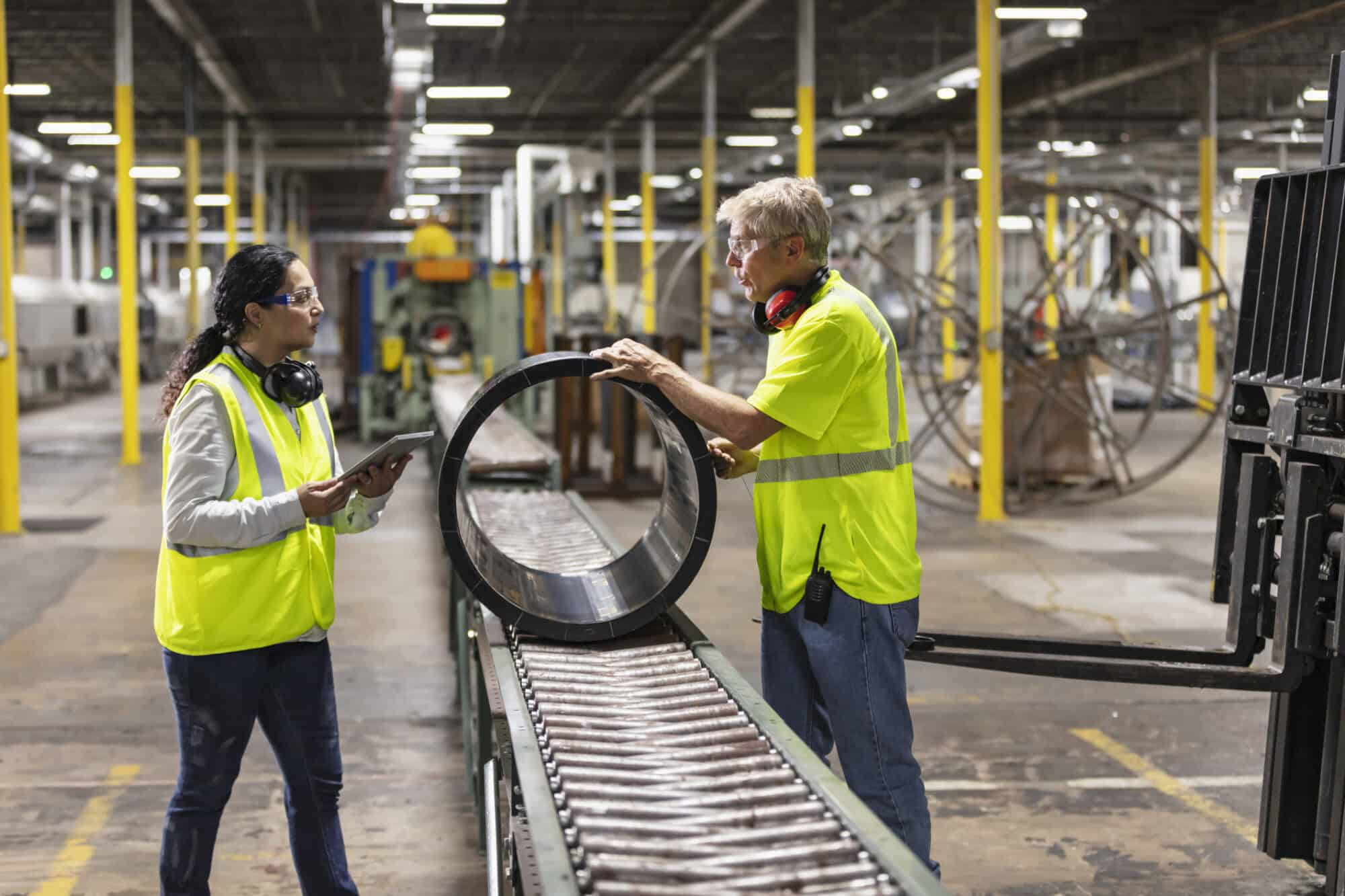
The NAM’s 2025 tax campaign, “Manufacturing Wins,” is focused on preserving tax provisions critical to manufacturing in the U.S. One of those is the corporate tax rate, which the 2017 tax reform lowered from 35% to a globally competitive 21%.
The NAM recently released a tax explainer on the current corporate rate, emphasizing why it’s crucial to U.S. manufacturing’s competitiveness on the world stage.
The background: Prior to 2017, the U.S. corporate tax rate was 35%, the highest among our peers in the Organisation for Economic Co-operation and Development and the third-highest rate in the entire world—making the U.S. an outlier and harming its ability to attract manufacturing investment.
- Tax reform lowered the corporate rate to 21%, aligning the U.S. with the average rate elsewhere in the OECD.
The benefits: Reducing the tax burden on manufacturers led to increased investment throughout the U.S., job creation, wage growth and overall economic expansion.
- In 2018, the year the lower rate took effect, manufacturers had their best year for job creation in more than two decades, creating more than 260,000 positions and increasing wages by 3%—the fastest pace in 15 years.
- NAM surveys conducted prior to tax reform found that nearly 80% of manufacturers were struggling with unfavorable business conditions like high taxes—a figure that dropped to just 12% following the reduction in the corporate rate.
What’s at stake: Although the corporate tax rate is not set to expire at the end of 2025, as other pro-growth provisions are, President Biden’s fiscal year 2025 budget called for an increase to 28%.
- This proposal would return the U.S. to one of the highest corporate tax rates in the developed world, resulting in fewer jobs, lower wages, less innovation and reduced investment in our communities.
What should be done: “Manufacturers are calling on Congress to preserve tax reform in its entirety—including the 21% corporate tax rate,” the NAM said.
- “Congress should maintain a globally competitive corporate rate—enabling manufacturers to continue leading on the world stage while driving innovation and job creation here at home.”
Tax Bill Scheduled for Thursday Vote
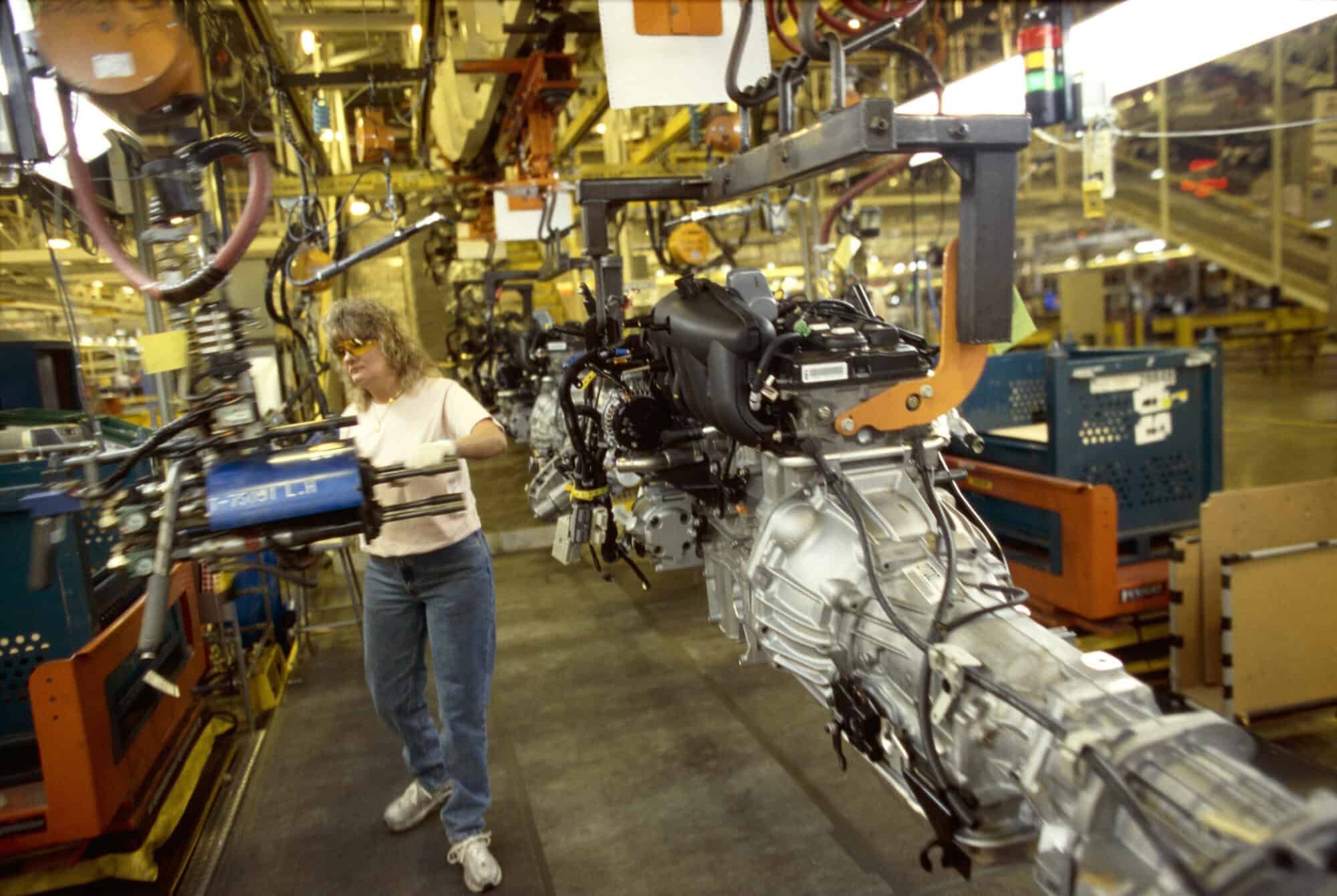
Senate Majority Leader Chuck Schumer (D-NY) has scheduled a procedural vote on a bipartisan tax package, though the bill’s fate remains uncertain.
What’s going on: The Tax Relief for American Families and Workers Act would restore expired tax policies that reduce the cost of manufacturers’ investments in R&D, equipment and machinery. Ahead of Thursday’s vote, the NAM called these policies “vital to manufacturing workers and America’s economic future.”
- Immediate R&D expensing: Prior to 2022, manufacturers in the U.S. could fully deduct their R&D expenses in the year those expenses were incurred. But in 2022, first-year R&D expensing expired, making R&D investments significantly more costly, particularly for small and medium-sized manufacturers.
- Enhanced interest deductibility: Also in 2022, a new standard took effect limiting the amount of interest manufacturers can deduct on business loans, making it more expensive for them to invest in growth and expansion.
- Accelerated depreciation: In 2023, 100% accelerated depreciation—which allows manufacturers to immediately expense the full value of their capital equipment purchases—began phasing down, meaning these vital investments are now more costly for manufacturers.
What to expect: Thursday’s procedural vote requires 60 votes in the Senate, a difficult hurdle.
What’s next: Immediate R&D expensing, enhanced interest deductibility and 100% accelerated depreciation are top priorities in the NAM’s 2025 tax agenda. As Congress prepares to address scheduled expirations of other policies from the 2017 tax reform next year, the NAM will continue to call for restoration of these important pro-growth incentives.
The last word: “Competitive tax policy is critical to manufacturers’ ability to compete on the world stage and create jobs here at home,” said NAM Vice President of Domestic Policy Charles Crain. “Congress should restore expired pro-growth tax policies and act to prevent even more devastating tax increases scheduled for 2025.”
